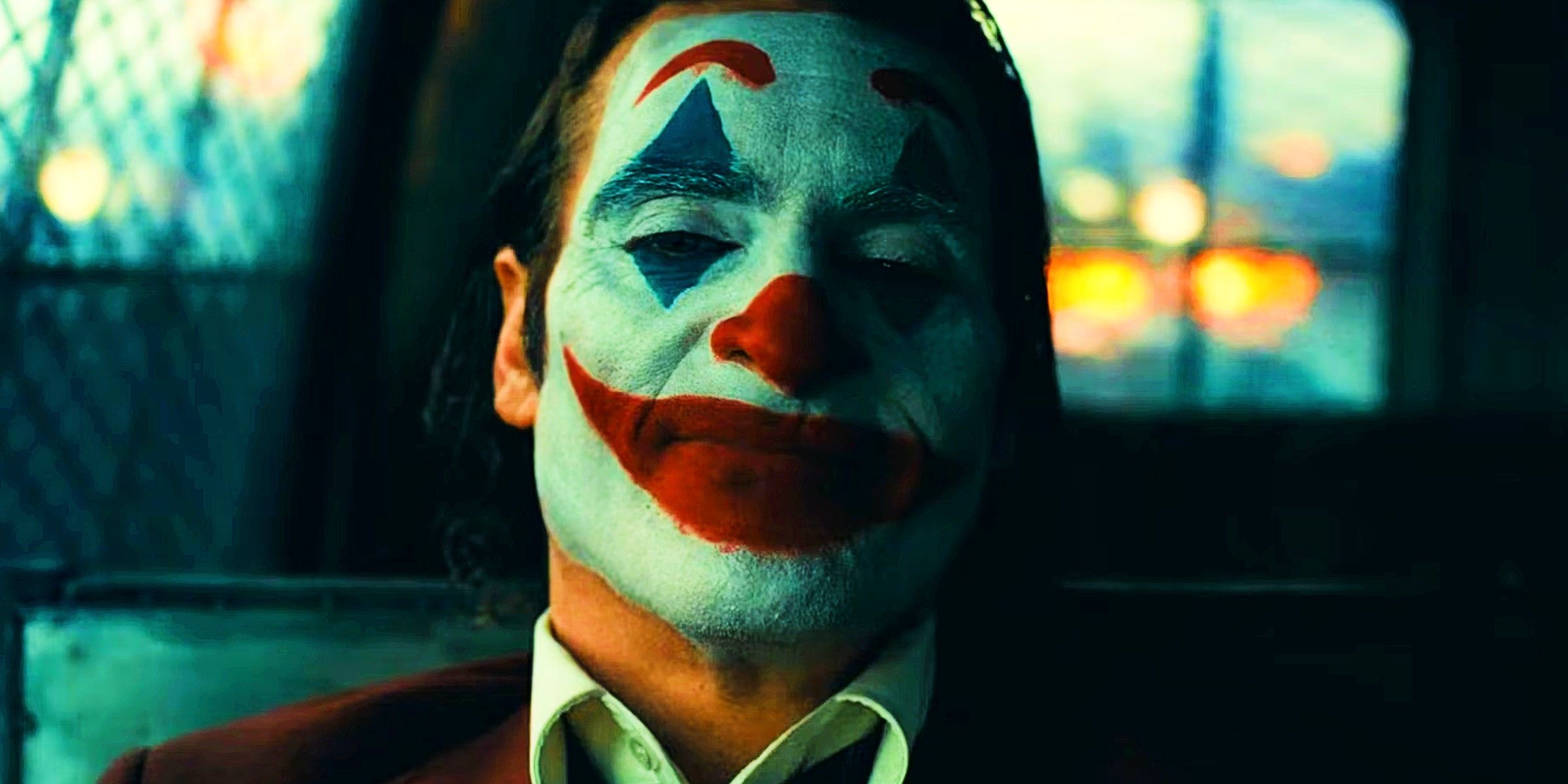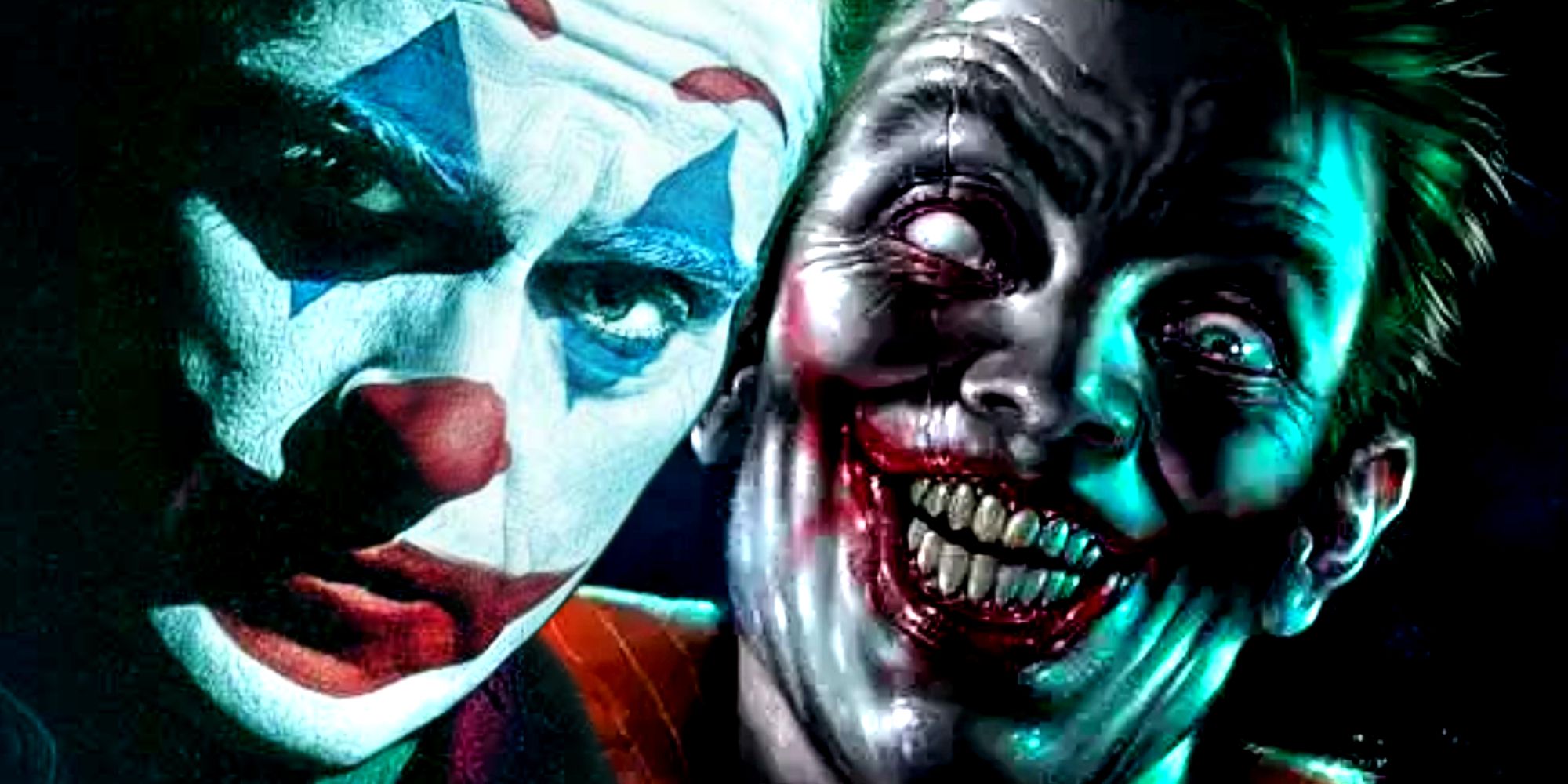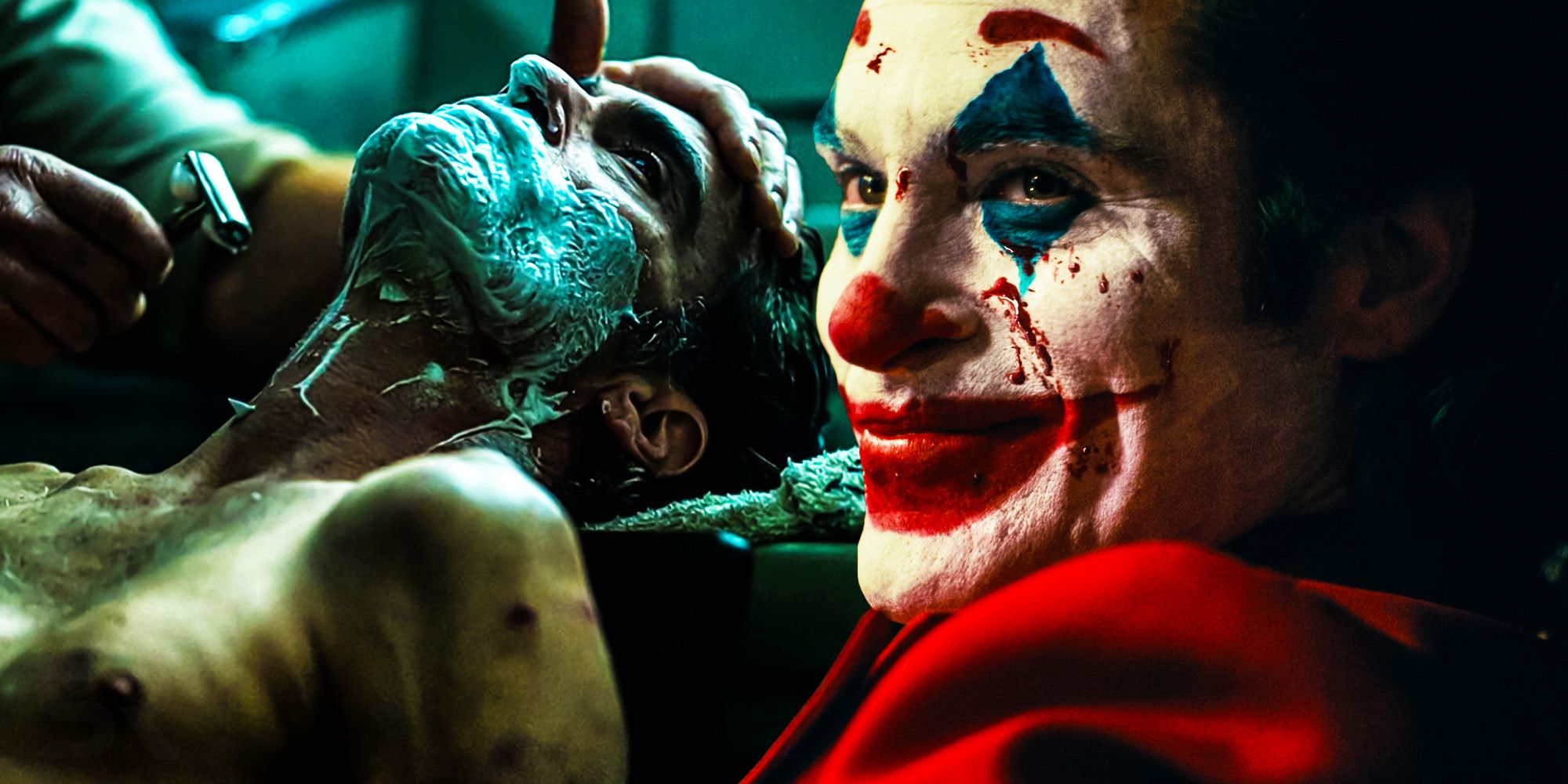Warning! Spoilers ahead for Joker: Folie à DeuxTodd Phillips’ Joker: Folie à Deux deconstructs Arthur Fleck’s Joker identity and flips the previous DC solo movie on its head. Joker‘s chaotic ending saw Arthur Fleck kill Murray Franklin in cold blood on national television, inspiring a revolution across Gotham City that led to Thomas and Martha Wayne’s deaths. Joker‘s standalone nature didn’t set up a sequel explicitly, but Joker: Folie à Deux‘s high-budget musical follow-up to the Joker’s origin story offered another glimpse at Arthur Fleck’s early days as the Joker, as well as Lady Gaga’s Harley Quinn origin story and her romance with the villain.
Despite Joker‘s hints at a unique yet faithful DC universe with a young Batman and an old Joker, Joker: Folie à Deux throws all chances of an eventual “Batman vs Joker” battle out the window. Arthur Fleck brings out his Joker persona one last time during his trial, but he abandons it after Lee Quinn leaves him and the Arkham guards break his spirit, realizing that the Joker is nothing but an excuse to indulge in violent fantasies. Joker: Folie à Deux skips post-credits scenes, as it ends on a sour note that makes a sequel seemingly impossible.
The Young Inmate Kills Arthur Fleck… And Becomes A New Joker
Arthur Fleck Accidentally Creates A New, More Violent Joker
Arthur Fleck taps into his Joker persona during his trial not only because it supports the theory that he’s innocent “by reason of insanity”, but also because Arthur’s Joker identity has become a refuge for him during times of crisis. As Joker, Arthur mocks the law and gathers support from his followers. However, Arthur’s guilt only hangs heavier on his shoulders as time goes on. Arthur kills his Joker persona by dropping his act in the middle of trial and confessing his guilt to the judge and jury. This moment starts a countdown to Arthur Fleck’s imminent death.
Arthur Fleck meets the same fate as Murray Franklin: he’s killed by a stranger who grew obsessed with him and felt betrayed by his words on national television
After losing his chance to leave Arkham State Prison, Arthur Fleck appears to be at peace with his fate. Arthur watches cartoons alongside his fellow prisoners and the same guards that beat him up, yet he’s calmly focused on the TV without indulging in his wild fantasies. Jackie Sullivan calls him for a visit, but before Arthur gets to learn his visitor’s identity, another Arkham patient stops him, tells him a joke, and stabs him to death. Arthur Fleck meets the same fate as Murray Franklin: he’s killed by a stranger who grew obsessed with him and felt betrayed by his words on national television.
The Joker has always been a famously mysterious character in DC Comics. Usually, the Joker’s backstory is either completely unknown or made up of several lies and conjectures. Joker seemed to provide the villain with a concrete origin story, but Joker: Folie à Deux demolishes it, as a new Joker is born. This new Joker has a different backstory, different motivations, and a different approach to mayhem. Joker: Folie à Deux‘s second Joker gives himself a Glasgow Smile similar to Heath Ledger’s Joker, but he’s a new character altogether, as the Dark Knight trilogy’s timeline doesn’t align with Joker‘s.
Harley Quinn (& Joker’s Followers) Never Understood Arthur & Desert Him
The Joker’s Popularity Never Really Took Arthur Fleck Into Account
Lee Quinn realizes that the man she fell in love with isn’t Arthur Fleck, but the Joker. Lee abandons Arthur as soon as he confesses during trial. Arthur still hopes he can reconcile with Lee, and he attempts to gain her trust back by singing a song to her over the phone. Arthur goes as far as turning down help from his followers in order to reunite with Lee and escape from Gotham with her. Yet, Lee departs by herself, knowing for certain that Arthur would be captured and sent to jail on a much harsher sentence.

Related
Will Joker 3 Happen? Everything We Know
Joker: Folie A Deux’s twisted ending sets up a surprising future for the franchise, but will a third movie actually happen? We break down the chances.
At first, the bomb that destroys the courthouse could seem like a misguided plan to help Arthur escape before he inevitably gets sent to prison or receives a death sentence. However, the explosion happens shortly after Arthur publicly quits his Joker persona and confesses the truth as a vulnerable Arthur Fleck. Although the bomb isn’t explored in detail, its aftermath proves that Joker’s supporters never really cared about Arthur Fleck, as Arthur could have easily died in the explosion. Instead, Joker’s supporters only wanted an outlet for their purposeless bloodthirst.
Arthur Fleck spent a long time trying to make a name for himself, but he only ended up making a name for others
The Arkham patient who kills Arthur Fleck also represents the aimless nature of the Joker and his followers. This patient evidently looks up to Joker and wishes to continue his legacy, but sees Arthur Fleck as a hindrance to Joker’s full potential. He reads Arthur’s departure from the Joker persona as a free pass to get rid of Arthur and take his place as the Joker. Arthur Fleck spent a long time trying to make a name for himself, but he only ended up making a name for others. The Joker now survives as a concept.
Joker 2 Is Criticizing The Misreadings Of Joker
Joker: Folie à Deux Mocks The Masses’ Sensationalization Of Violence
Todd Phillips’ Joker provided a satisfying ending for Arthur Fleck, as he attained fame, personified his anger, and took out his resentment on the person that supposedly betrayed him. However, Arthur Fleck’s actions were by no means justified, no matter how they’re portrayed on screen. Instead of doubling down on Arthur Fleck’s twisted desires and letting him escape scot-free, Joker: Folie à Deux tears down his Joker identity. Arthur couldn’t have lived any longer without facing the repercussions of his actions, and he had to die alongside the Joker.
Joker: Folie à Deux opens with an animated musical number that presents Arthur Fleck’s fight against his literal shadow. This shadow represents the Joker — Arthur’s darker side and the guilt that comes with it. As hard as Arthur fights his shadow, he’s simply too weak to control it, and he suffers as a result. Lee Quinn and the Joker’s followers fail to understand this, and they turn on Arthur as soon as he distances away from the Joker.
Just like the animated short suggests, Arthur fails to cope with his darker side throughout
Joker: Folie à Deux
, and he doesn’t get to enjoy his peace of mind before another Joker kills him.
Similarly to Lee Quinn and Joker’s followers, viewers who idealized Arthur Fleck’s actions in Joker may be disappointed by Joker: Folie à Deux‘s ending. Arthur couldn’t be more different from the ruthless, anarchic villain that Joker‘s ending set him up to be. Arthur Fleck was never the coldhearted murderer that his Joker persona suggested to the public. Arthur always struggled to kill. It was only a matter of time until Lee saw through the Joker and abandoned Arthur. Likewise, it was only a matter of time until his fans and the media chewed him up, spit him out, and replaced him with a new Joker.

